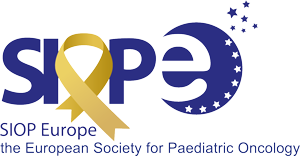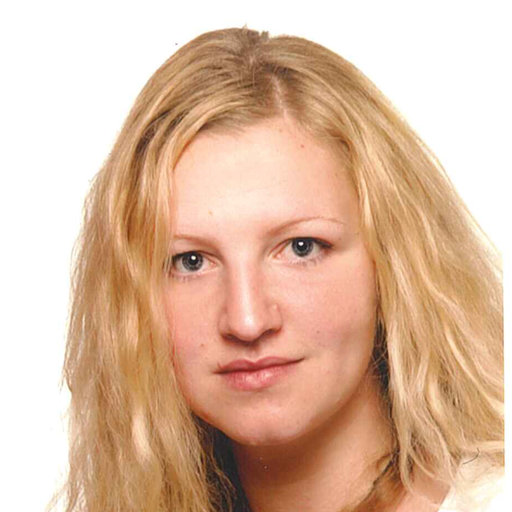Grants
The DIPG / DMG Collaborative has funded $18,823,550 in DIPG/DMG research.
Interested in applying for a grant from the DIPG / DMG Collaborative? Learn more.

University of Newcastle – $116,997 USD, 173,016 AUD
$116,997.00
December 2023
(2023) Enhancing the recruitment of tumor infiltrating lymphocytes to improve responses to DMG therapies.
ABSTRACT
Diffuse midline glioma (DMG) including those within the pons (diffuse intrinsic pontine glioma [DIPG]) is the most lethal form of childhood cancer with a median overall survival of 9-11 months, and a 5-year survival <1%. DMG represents 20% of all pediatric cancer deaths, with no recognized treatments other than radiotherapy, highlighting the urgent need to progress innovative approaches. Immunotherapies have dramatically improved outcomes in other aggressive cancers, including melanoma patients with brain metastasis. However, immunotherapies such as immune checkpoint inhibitors (ICIs), have not shown clinical benefit in DMGs, likely due to a lack of immune cells in or near the tumor located in the central nervous system (CNS). Studies in other brain tumors that show untreated brain cancer patients experience immune suppression (T cell lymphopenia) as their T cells are sequestered within the bone marrow. We have powerful data showing that ONC201 promotes release of immune cells from the bone marrow, and makes DMGs more visible to the immune system, which, in combination with the drug paxalisib, recruits immune cells to the tumor. Furthermore, two patients receiving ONC201 and paxalisib over a 16-month period showed dramatic reductions in tumor volume and increased survival that we attribute to an immune response. This project will identify if untreated DMG patients experience lymphopenia. We will also determine whether ONC201 in combination with paxalisib promotes an immune response to help fight the tumor, and identify how we can further promote the function of the immune system to improve DMG outcomes.
LAY SUMMARY
DMGs harbor a ‘cold’ tumor microenvironment (TME), meaning few, if any, immune cells are in the immediate vicinity of the tumor. The absence of these immune features likely explains why antibody-based immunotherapies have not delivered a benefit for DMG patients, that has been seen in other cancers. We believe that the cold TME of DMG is promoted by DMG patients experiencing T cell lymphopenia (yet to be confirmed). In adults with glioblastoma (another aggressive/lethal brain cancer), T cells are confined within the bone marrow, unable to enter the bloodstream and hence the brain, and therefore the tumor is immunosuppressed even when treated with immunotherapies. This has been shown to be influenced by the protein ‘Beta-arrestin’ which becomes activated in T cells in the bone marrow, stopping their egress into the circulation. This phenomenon has also been shown in traumatic brain injury patients, where sepsis is the most frequent cause of death due to the body not being able to mount an immune response to infection. Although the mechanisms of immune suppression for glioblastoma patients and patients with brain injuries is not resolved, we believe the peripheral nervous system (PNS) is playing a role as it is implicitly linked with the immune system.
Our team have been studying the anti-DMG effects of the DRD2 antagonist ‘ONC201’ for four years. Our preclinical studies underpin the phase II, international, adaptive clinical trial ‘Combination Therapy for the Treatment of Diffuse Midline Glioma’, which is evaluating the effect of radiotherapy (RT) in combination with ONC201, or the PI3K/Akt inhibitor paxalisib, and, ONC201 + paxalisib as a maintenance therapy following the completion of RT.
Our studies show that:
i) ONC201 reduces beta-arrestin signaling, potentially aiding in the escape of T cells from the bone marrow.
ii) Treating DMG with ONC201, increases expression of immune recognition molecules on DMG cells, amplified when co-treating DMG cells with paxalisib.
iii) The combination of ONC201 with paxalisib promoted recruitment of immune cells to the tumor of mice engrafted with human DMGs, suggesting that the combination treatment illuminates the DMG to the immune system.
iv) ONC201 treatment of DMG mice with a functional immune system dramatically extended survival, compared DMG mice without a fully functioning immune system, suggesting a potential immune involvement in the response to ONC201 treatment.
v) Two DMG patients who are/have receiving/ed ONC201 in combination with paxalisib following compassionate access show a dramatic reduction in tumor burden, improved neurological functioning and increased progression free and overall survival.
We believe that ONC201, in combination with paxalisib, promotes the anti-cancer activity of T cells which is key to ONC201/paxalisib’s anti-DMG effects. We believe this only occurs in patients not receiving dexamethasone, a potent immunosuppressor prescribed to many/all DMG patients to reduce symptoms caused by brain swelling. This project seeks to understand/confirm whether DMG patients experience lymphopenia (reduced immune system function), and to enhance the immune-mediated, anti-DMG response to ONC201/paxalisib. In doing so, we will provide important new information on how we can enhance the benefit of therapies already in clinical trial (NCT05009992) and how we may bring the benefits of immune-based therapies (such as immune checkpoint inhibitors or CAR-Ts) that have been seen in other cancers, to the DMG community.

Princess Máxima Center for Pediatric Oncology – $98,306
$98,306.00
December 2023
Assessing the potential of the HDAC inhibitor givinostat ± radiotherapy for the treatment of diffuse midline glioma.
Pediatric brain tumors are the most frequent childhood solid tumors, and the leading cause of cancer related death in children. Patients with a diffuse intrinsic pontine glioma (DIPG) or midline glioma (DMG) – located in the brainstem, thalamus, or spinal cord – have a particularly bad prognosis. These tumors often cannot be surgically removed and to date, treatment with several types of chemotherapy has not been effective. Radiotherapy, the other cornerstone of cancer treatment, only temporarily alleviates symptoms without leading to cure. Thus, to develop an effective treatment for this patient group we will need to combine different forms of treatment, such as radio- or immunotherapy, a treatment in which the patient’s own immune system is used to fight the tumor.
In this project, we will study the effect of givinostat, a drug used in the treatment of children suffering from Duchenne muscle dystrophy, in combination with radiotherapy on DIPG/DMG in specially developed mouse models. Besides looking at survival benefit of this treatment, we will also study the immunological changes in the tumor and its surrounding healthy brain tissue. By mapping these changes, we can identify additional therapeutic targets to be used in future treatment combinations that include chemo-, radio- and immunotherapy.
We think that such a combinational treatment may be needed to tackle hard-to-treat cancer types like DIPG/DMG. Previous experiments from our laboratory have shown that very low doses of givinostat can kill DIPG cells growing in a dish and that this drug can enhance the effect of radiotherapy. As such, we anticipate that givinostat + radiation will enhance survival when tested in DMG-bearing mice. Yet, this combination may still not be sufficient for cure, as DIPG cells have been shown to escape treatment by switching to alternative survival strategies. Previous experiments also showed, however, that givinostat treatment (on itself) induces an increase of immune cells in the tumor, which may allow for the use of immunotherapy as an additional therapeutic option. Together, these results open the door for immunochemotherapeutic combinations that ultimately may lead to an increased progression free- and overall survival of DIPG/DMG patients.

Nemours Children’s Hospital - $50,000
$50,000.00
December 2023
Treatment of Diffuse Intrinsic Pontine Glioma with the Oncolytic Zika Virus.
Diffuse intrinsic pontine glioma (DIPG) is a devastating brainstem tumor affecting 150-300 children in the US per year. The overall rate of survival is dismal, with only 10% of children surviving beyond the second year from the time of diagnosis.[1] Though a rare tumor with high mortality, DIPG represents 80% of pediatric brainstem tumors.[2] One of the challenges in treating DIPG is its location in the pons and the relative protection of the blood brain barrier. Despite advances, treatment for this aggressive tumor remains ineffective highlighting the absolute need for a novel therapy. Our laboratory has identified Zika virus as an innovative oncolytic virus that is cytotoxic to DIPG cells in culture as well as in DIPG tumors grown in mice. In order to explore this viable alternative therapy for DIPG, we examined related tumors and their treatment advances. One of these related tumors is neuroblastoma, which is also a childhood cancer that occurs along nervous tissue and the adrenal glands. Our published data established that neuroblastoma cells are killed by Zika virus. Furthermore, we validated a survival advantage for mice growing neuroblastoma tumors after treatment with Zika virus: all mice with neuroblastoma tumors revealed a complete loss of tumor mass after Zika viral injection therapy. Our findings in neuroblastoma apply as a therapy for DIPG because of the similarity of their cellular origin. Recently, a new method delivered a modified adenovirus directly into the pons of children with DIPG followed by radiation, resulting in a 33% survival rate at 20 months.[3] Although this confirms that direct viral delivery can be a feasible approach for treating DIPG, the adenoviral vector did not improve overall survival. This is where Zika virus can emerge as an effective therapy. We envision using a similar direct delivery protocol, but using Zika virus, which is far more cytotoxic to DIPG, yet remains considerably safer than adenovirus to the patient and require no use of radiation.
Because of a common cell lineage between neuroblasts and glial cells, we tested and confirmed that a single application of Zika virus killed >90% of both cell lines and patient derived DIPG cells in culture. In our preliminary mouse study, we successfully treated DIPG tumors grown on the mouse hindleg leading to greater than >90% loss of tumor mass with no side effects to the mice. As a result, we are pursuing the DIPG Collaborative Award to characterize the Zika viral killing of DIPG tumors grown directly in a mouse brain and investigate the requirement of the antiviral Type I interferon pathway in Zika viral cell death with our eventual goal aiming towards a phase 1 clinical trial.

Icahn School of Medicine at Mount Sinai - $100,000
$100,000.00
December 2023
Preclinical evaluation of TP-0184 in an autochthonous mouse model of DIPG/DMG
Evaluation of new cancer drugs, and determining which models best predict whether the new cancer drug will benefit children with DMG/DIPG is unclear. DMG/DIPG tumor cells have complex interactions with cell types normally found in the brain. Therefore, new therapies must be evaluated in animal models where DMG/DIPG tumor cells arise in the brainstem. There are several types of DMG/DIPG models:
1. Using cells from patients with DMG/DIPG. This model requires mice without an immune system.
2. Introducing DMG/DIPG specific genetic alterations into normal mouse brainstem cells. This model has more heterogeneity.
3. Using tumor cells from model #2 but injecting the tumor cells into a new mouse with a normal immune system to minimize heterogeneity.
TP-0184 is a drug with multiple targets, such a cell surface receptor called ACVR1 (overactive in 25% of DMG/DIPG tumors) and two other targets JAK2 and ALK5. These targets or the molecules that activate them are expressed in immune cells, so evaluation in models with a normal immune system is critical. Therefore, we will evaluate TP-0184 in models #2 and #3. We expect that TP-0184 will work in model #3 but not #2 and we will examine mechanisms of resistance to model#3

The University of Alabama at Birmingham – $100,000
$100,000.00
December 2023
Intranasal Delivery of Targeting Nanotherapeutics for DIPG
Pediatric gliomas are one of the most common cause of cancer-related death in children, and diffuse intrinsic pontine gliomas (DIPGs) are the most rapidly fatal of these tumors. No significant advances in the survival of patients with DIPG have been made over the last few decades, and new therapeutic approaches are desperately needed.
The infiltrative nature together with delicate tumor location in the brainstem precludes surgical resection, and the blood-brain barrier (BBB) prevents to deliver most drugs to the brain. To overcome this barrier, we will employ an innovative and effective drug delivery, intranasal delivery. Intranasal delivery is a practical, noninvasive method of bypassing the BBB to deliver drugs to the brain using unique anatomic (nerve) connection between nose to the brain, reducing unwanted systemic toxicity, and is amenable to self-administration by patients.
Intranasal delivery (IND) can be optimized by using nanoliposomal drug carriers which provide stable encapsulation of the drug and improve nasal penetration. To increase the specificity of liposomal drug delivery, immunoliposomes, which coated with antibodies on the surface of liposomes, can increase delivery of the drugs into the tumor cells, and reduce toxicity to normal cells. The primary goal of this project is to integrate IND with the targeted nanotherapeutics, leading to increase drug concentration in brainstem tumor without harming healthy brain tissues.
We have generated PDGFRA-antibody coated nanoimmunoliposome, because PDGFRA (Platelet-Derived Growth Factor Receptor Alpha) plays a role in DIPG growth and expresses in as much as 70% of DIPG. We found greater uptake of PDGFRA coated nanoliposome into the DIPG cells than that of non-coated nanoliposome.
Unlike adult glioma, DIPG is uniquely characterized by histone gene mutation, which causes enzymatic modification in the histone protein, which in turn, increases gene expression. DIPG has shown sensitivity to enzyme-targeted therapies, those targeting EZH2, the enzyme increases histone methylation. Unfortunately, the clinical efficacy of systemically administered (i.e., intravenous injection) EZH2 inhibitors in children has been disappointing due to poor penetrance across the BBB. For this reason, we consider it of high importance to perform a pre-clinical study of IND bypassing the BBB for the effect on EZH2 inhibitor delivery to, and biological activity, against DIPG.
In this proposal, we will test the efficacy of IND of PDGFRA-naoimmunoliposomal-Tazemetostat, an FDA approved EZH2 inhibitor, using patient-derived DIPG animal models. In our preliminary study, PDGFRA-nanoimmunoliposomal-Tazemetostat showed greater inhibition of DIPG cell growth in compared to empty immunolipsome. We hypothesize that this new therapeutic approach will reduce systemic toxicity and increase drug distribution and efficacy for treating brainstem tumor in patient-derived DIPG animal model,
Furthermore, we will test a new intranasal device, SipNose, which has recently approved by FDA and being tested in clinical trials in children. Finally, our long-term goal is to use IND of nanotherapeutics in combination with radiation which is used routinely for the treatment of DIPGs. The data generated through this study could lay the foundation for a clinical trial of this approach in children, with the goal to improve clinical care and outcomes for children with this devastating pediatric brain tumor.

Children's Cancer Institute – $181,736 USD, $281,691 AUD
$181,736.00
November 2023
Targeting post-translational protein modification to halt Diffuse Intrinsic Pontine Glioma tumorgenicity
Diffuse intrinsic pontine gliomas (DIPG) are a devastating childhood brain cancer which are universally fatal. Currently DIPG remain incurable as no therapy has been developed that can target underlying processes involved in the pathogenesis of this disease. While key driver mutation have been identified (such as histone mutations), to date they have eluded effective therapeutic targeting. Citrullination, the conversion of arginine to citrulline, is an irreversible protein post-translational modification that changes the biochemical and functional properties of proteins. Protein citrullination occurs solely through the activation of the peptidylarginine deiminase (PAD) family of enzymes. At the heart of this proposal lies the novel concept that PAD activity is a pivotal event in and driving factor for DIPG tumorigenesis. Our hypothesis and supporting preliminary data introduce a paradigm shift away from the role of genetic mutations, offering alternative and tractable therapeutic strategies. Here, we now seek to highlight the role of, and include the irreversible protein post-translational modification of, citrullination as a causative event in DIPG, thus creating a new lens through which to view the oncogenesis and potential treatment of this disease.
Epigenetic dysregulation is recognised as a driver of DIPG pathogenesis, with the majority of patients exhibiting the main responsible histone mutation (H3K27M). While >80% of DIPG have this key genomic driver, the precise mechanism by which this leads to DIPG development remains undefined. Histones are a major target for citrullination and citrullination also occurs on non-nuclear proteins, many of which have potential functions in DIPG development. We have shown that pharmacological inhibition of PAD activity restores histone methylation, causing DIPG cell death through reactive oxygen species (ROS) activation of the unfolded protein response (UPR), with H3K27M DIPG particularly susceptible. We have developed and synthesised a novel blood brain permeable inhibitor of PAD activity that, when compared to the available tool compounds, demonstrates enhanced cytotoxicity against DIPG cultures. In addition to fully characterising the global changes within DIPG initiated through PAD inhibition, we aim to progress preliminary drug efficacy studies into our in vivo patient derived xenograft (PDX) models as a proof of principle towards a Phase I/II clinical trial, providing the necessary research pipeline towards an effective treatment for DIPG.
We aim to tease out the key and early events that drive pathogenesis in this disease, providing novel insights into new targets for therapeutic advantage, developing a platform of research to challenge and change the understanding of disease progression. The research proposed here will for the first time establish the role of citrullination in DIPG. We are taking the innovative step of using a combined multidisciplinary research team, from basic research scientists with a wealth of drug chemistry and cell biology knowledge, to lead clinicians on the forefront of DIPG treatment, a collaborative effort with a breadth of expertise that has the potential to facilitate breakthrough outcomes. By performing strategic studies focused on mechanistic outcomes, using advanced analyses encompassing innovative workflows and methodologies, our multifaceted approach will identify the global processes involved in DIPG development at both the transcriptional and post-translational level. The combination of our in vitro and in vivo studies on the efficacy of PAD inhibition within the setting of DIPG will provide a much-needed therapeutic option for the disease, positioning a lead compound for direct translation into the clinical setting. Through employing our detailed, comprehensive, and erstwhile underutilised analytical proteomics and metabolomics approaches within the setting of DIPG, we will greatly contribute to the overall understanding of the pathogenic processes involved in the disease, adding to the current scarcity of such information in the field. Hence, we have a clearly formulated plan to translate the knowledge and predictive insights gained from this research proposal, offering comprehensive advances that will categorically inform and influence ongoing DIPG therapeutic regimens.

Memorial Sloan Kettering Cancer Center – $100,000
$100,000.00
November 2023
CSF Cell-free Tumor DNA (CSF cfDNA) Liquid Biopsies for Pediatric, Adolescent, and Young Adult Patients with Primary Brain Tumors
Pediatric brain tumors are the leading cause of cancer-related death in children and adolescents [1]. Recent advances in molecular analysis have led to major improvements in diagnostic accuracy and prognostication for pediatric patients with brain tumors, allowing physicians to adapt available therapies to specific patient’s needs[2-4]. However, access to tumor tissue for molecular testing in these patients requires an invasive procedure, which can be high-risk and/or unfeasible depending on the anatomical location of the tumor. Furthermore, repeated tissue sampling to monitor therapy response or resistance is often not clinically advisable or risky. We have successfully developed a minimally invasive “liquid biopsy” clinical assay to detect circulating tumor DNA (ctDNA) in cerebrospinal fluid (CSF) of pediatric brain tumor patients[5]. We have previously shown that CSF ctDNA genomics captures the genomic and clonal architecture of brain tumors, which recently led to the securing of a CLIA certification for this assay[5, 6]. To enhance tumor diagnosis through molecular subclassification and guide therapeutic decision making for pediatric brain tumor patients using this minimally invasive approach, we established a Pediatric Brain Tumor Consortium (PBTC)-sponsored trial, with the goal of integrating CSF ctDNA liquid biopsies into the clinical care of pediatric brain tumor patients across the PBTC sites.
The PBTC consortium is composed of 17 of the leading pediatric cancer centers across North America. Our non-therapeutic protocol entitled “CSF Cell-free Tumor DNA (CSF ctDNA) Liquid Biopsies for Pediatric, Adolescent, and Young Adult Patients with Primary Brain Tumors” has been approved by the scientific review committee of the PBTC, the NIH’s Cancer Therapy Evaluation Program (CTEP) and the NIH’s Central Institutional Review Board (CIRB) and is expected to open at the first sites during summer 2023. This protocol is investigator-initiated, and hence we are requesting funding to cover the costs associated with CSF ctDNA sequencing to enable full execution of this pre-approved PBTC-sponsored study.

University of Colorado Denver – $200,000
$200,000.00
November 2023
Preclinical assessment of efficacy and specificity of logic-gated CAR-T cell therapy in Diffuse Intrinsic Pontine Glioma
Proposal Abstract: Chimeric Antigen Receptor (CAR)-T cells have been clinically effective in patients with leukemias and lymphomas. Our goal is to bring similar success in treating a fatal brain tumor in children called DIPG (Diffuse Intrinsic Pontine Glioma). A major obstacle in treating brain tumors with CAR-T cell therapy is a lack of antigens that are tumor-specific or which are absent on normal vital tissues, which can lead to off-target toxicities. To overcome this risk, we have successfully generated “logic-gated” CAR-T cells targeting two distinct antigens, CD99 AND B7-H3, that are highly expressed on DIPG but present singly on certain normal cells. These gated “AND” CAR-Ts will have full activation against DIPG cells having both the antigens while sparing the single antigen-expressing normal cells. We propose to investigate 1) the specificity of these dual antigen-targeting CAR-T cells to kill only the DIPG tumor cells while protecting the normal cells; 2) the preclinical efficacy of these CAR-T cells using DIPG tumor-bearing mouse models and thereby assess the translational relevance to DIPG patients. The innovation of this proposal lies a) in the identification of a new antigen, CD99, as highly expressed in DIPG cells; b) in co-targeting CD99 with another previously reported tumor antigen, B7-H3, and c) in designing the CAR construct to pair each of these antigens with the signaling domain that will maximize the selectivity of our logic-gating for dual-antigen-positive tumor cells while mitigating the risk to single-antigen-positive cells from healthy tissues.
What questions will this study address? Our research addresses the critical and immediate need to develop a new therapy for DIPG. DIPG tumors are mainly restricted to the pons. and recent studies identified the involvement of other midline structures, including the thalamus. The tumor’s location makes it inoperable, and chemotherapy drugs are ineffective due to their inability to cross the blood-brain barrier and reach the tumor site. Therapy consists of radiation that provides only temporary relief. This proposal will test a novel CAR-T base therapy as these T cells can go anywhere in the body and easily access the brain’s tumor site. This proposal will address the need to target more than one antigen to clear DIPG tumors and prevent toxicities to other normal tissues.
How will this study change the current standard of care? The current standard of care treatment for DIPG patients is only radiation therapy, which is palliative care, as the tumor relapses. Our dual antigen targeting gated CAR-T cell therapy is expected to open new therapeutic approaches in the field of immunotherapy for brain tumors in children.
What is the significance of this study? The single-antigen CAR-T cells have shown promise in early clinical trials for DIPG, but off-target toxicity can potentially limit their use. This proposal is significant because it aimed at eliminating DIPG tumor cells specifically without causing toxicity to normal cells and being potentially curative. This study results will also provide a proof-of-principle in using logic-gated CAR T cells in targeting other solid tumors with a heterogeneous expression of tumor antigen.
How will this study benefit DIPG patients and their families? This research has the potential to help DIPG patients and their families. DIPG is an aggressive brain tumor found in young kids and our research mainly applies to the pediatric population. This is the worst life-threatening brain tumor, with less than 2% survival compared to other pediatric and adult brain tumors. A life-threatening illness in a child can have a destructive effect on the whole family. Our study can improve the care of these patients by increasing their chance of survival.
What are the future goals of this study? Successful completion of this work will provide an important step toward a new and effective therapeutic strategy for children with DIPG. This study will also provide data necessary to apply for an NIH-Ro1 grant to investigate the efficacy of combining this new CAR-T cell therapy with radiation to assess the effect of immunotherapy in patients’ tumors previously exposed to radiation and to establish the safety of the gated CAR-T cells using DIPG humanized mouse models. These studies will lead to IND enabling and FDA approval of the gated CAR-T cell therapy for DIPG patients.

SIOPe DIPG/DMG Registry – $715,852 USD, € 643,014
$715,852.00
November 2023
Renewal of the European DIPG/DMG Registry
The SIOPe DIPG/DMG Registry is a cooperative effort of 21 centers across 12 countries to identify patterns and abnormalities among DIPG and DMG to help enhance future efforts and trials.

University Medicine Göttingen – $50,000
$50,000.00
May 2023
Starve the monster: Multi-metabolic treatment strategies for H3.3K27M-mutant DIPG/DMG
Diffuse midline glioma (DMG) including diffuse intrinsic pontine glioma (DIPG) are most aggressive, deadly brain tumors of childhood due with marked therapeutic resistance. DIPG/DMG are uniquely characterized by a histone mutation (H3K27M) that significantly contributes to the poor prognosis.
In consequence, targeting H3K27M-mutation in DIPG/DMG might be a promising therapeutic approach. To identify H3K27M-dependent targets, we investigated how histone-mutated DIPG/DMG cells differ from non-histone-mutated ones. We identified nine metabolic processes that were significantly overrepresented in H3K27M-mutated cells indicating their potential impact as essential energy sources for H3K27M-mutated DMG/DIPG.
In the present project, we will aim to inhibit the identified metabolic processes with small molecules ideally with a potential applicability also in humans. To prevent that DIPG/DMG cells evade single targeted therapy approaches by activation of alternative metabolic pathways, we will combine these inhibitors for an effective and long lasting treatment response in DIPG/DMG cells. Different healthy human cells will be used as controls to confirm the potential safety of the combined metabolic treatment approaches.
In summary, combined inhibition of the most important H3K27M-mutation-dependent metabolic processes will be identified to provide an innovative effective approach for H3K27M-mutated DIPG/DMG with maximal safety for normal human body cells.

Cincinnati Children's Hospital Medical Center – $153,867
$153,867.00
November 2022
Combining innovative proton radiotherapy with targeted and immune therapies to treat DMG/DIPG
Diffuse midline gliomas (DMG), including diffuse intrinsic pontine gliomas (DIPG), are devastating childhood brain tumors that occur in the central portions of the brain. Traditional chemotherapies don’t work on them, and because of their location they cannot be removed by surgery. Radiation therapy slows tumor growth, but progression is inevitable. DMG/DIPG resistance to treatment is due to a genetic mutation called H3K27M which is found in the tumor cells. Currently, it is not totally clear why the H3K27M mutation leads to such resistant tumors, but it is likely that a combination of therapies including radiation and immunotherapy specifically targeted to the tumor cells and their surrounding support cells will be needed for a cure. Development of effective therapies represents an urgent unmet need in the pediatric brain tumor community. The state-of-the-art proton research facility at Cincinnati Children’s Hospital Medical Center will also allow us to apply a promising new form of radiation (FLASH therapy) to our pre-clinical brain tumor models. FLASH proton therapy delivers radiation at ultra-high speeds and causes less damage to surrounding healthy tissues than typical radiation. Initial experiments using FLASH indicate that it effectively kills DMG/DIPG tumor cells in lab models. For these reasons, FLASH may hold great promise for DMG/DIPG patients by allowing for higher safe doses of radiation and faster treatment. Our collaborator, Dr. Carl Koschmann, has been studying another new anti-tumor drug called ONC201, which stops DMG/DIPG growth in lab models and in patients. In addition, therapies combining immunotherapy targeting immune cells have proven more effective than traditional therapies, and with yield better outcomes. We see an opportunity to combine proton therapy with this targeted new drug along with immunotherapy, in comparison with standard x-ray radiation therapy, the only treatment that consistently slows DMG/DIPG growth. Our project is to test this powerful combination against a full range of experimental models and use cutting-edge molecular analyses to understand why they work and what may be needed to make them even more effective in the future. Our studies should help to design novel combined treatment strategies for DMG/DIPG in future clinical trials and improve therapy efficacy and patient survival.

Hunter Medical Research Institute – $232,932
$232,932.00
November 2022
Enhancing the recruitment of tumor infiltrating lymphocytes to improve responses to DMG therapies
DMGs harbor a ‘cold’ tumor microenvironment (TME), meaning few, if any, immune cells are in the immediate vicinity of the tumor. The absence of these immune features likely explains why antibody-based immunotherapies have not delivered a benefit for DMG patients, that has been seen in other cancers. We believe that the cold TME of DMG is promoted by DMG patients experiencing T cell lymphopenia (yet to be confirmed). In adults with glioblastoma (another aggressive/lethal brain cancer), T cells are confined within the bone marrow, unable to enter the bloodstream and hence the brain, and therefore the tumor is immunosuppressed even when treated with immunotherapies. This has been shown to be influenced by the protein ‘Beta-arrestin’ which becomes activated in T cells in the bone marrow, stopping their egress into the circulation. This phenomenon has also been shown in traumatic brain injury patients, where sepsis is the most frequent cause of death due to the body not being able to mount an immune response to infection. Although the mechanisms of immune suppression for glioblastoma patients and patients with brain injuries is not resolved, we believe the peripheral nervous system (PNS) is playing a role as it is implicitly linked with the immune system.
Our team have been studying the anti-DMG effects of the DRD2 antagonist ‘ONC201’ for four years. Our preclinical studies underpin the phase II, international, adaptive clinical trial ‘Combination Therapy for the Treatment of Diffuse Midline Glioma’, which is evaluating the effect of radiotherapy (RT) in combination with ONC201, or the PI3K/Akt inhibitor paxalisib, and, ONC201 + paxalisib as a maintenance therapy following the completion of RT.
Our studies show that:
i) ONC201 reduces beta-arrestin signaling, potentially aiding in the escape of T cells from the bone marrow.
ii) Treating DMG with ONC201, increases expression of immune recognition molecules on DMG cells, amplified when co-treating DMG cells with paxalisib.
iii) The combination of ONC201 with paxalisib promoted recruitment of immune cells to the tumor of mice engrafted with human DMGs, suggesting that the combination treatment illuminates the DMG to the immune system.
iv) ONC201 treatment of DMG mice with a functional immune system dramatically extended survival, compared DMG mice without a fully functioning immune system, suggesting a potential immune involvement in the response to ONC201 treatment.
v) Two DMG patients who are/have receiving/ed ONC201 in combination with paxalisib following compassionate access show a dramatic reduction in tumor burden, improved neurological functioning and increased progression free and overall survival.
We believe that ONC201, in combination with paxalisib, promotes the anti-cancer activity of T cells which is key to ONC201/paxalisib’s anti-DMG effects. We believe this only occurs in patients not receiving dexamethasone, a potent immunosuppressor prescribed to many/all DMG patients to reduce symptoms caused by brain swelling. This project seeks to understand/confirm whether DMG patients experience lymphopenia (reduced immune system function), and to enhance the immune-mediated, anti-DMG response to ONC201/paxalisib. In doing so, we will provide important new information on how we can enhance the benefit of therapies already in clinical trial (NCT05009992) and how we may bring the benefits of immune-based therapies (such as immune checkpoint inhibitors or CAR-Ts) that have been seen in other cancers, to the DMG community.

SONALASENSE – $198,436
$198,436.00
November 2022
A Phase 1/2 Study of Sonodynamic Therapy Using SONALA-001 and Exablate 4000 Type 2 in Patients With DIPG
Diffuse intrinsic pontine glioma (DIPG) is a lethal pediatric brain tumor with no effective therapy and extremely poor prognosis (average 9 months of survival after diagnosis). Because of the location of DIPG tumors within the brainstem, surgical intervention is a highly invasive and imprecise option, as accidental removal of any excess tissue in the area can cause additional brain damage. Thus, there is significant need for a method to effectively treat DIPG that is non-invasive. Preclinical studies have shown that performing non-invasive sonodynamic therapy (SDT) through MRI-Guided Focused Ultrasound (MRgFUS) combined with 5-aminolevulinic acid (ALA) can slow growth of gliomas and greatly extend survival in animal models of glioma. ALA is a metabolite, or a molecule used in metabolic processes. Because cancer cells have metabolic rates significantly higher than healthy cells, ALA is selectively taken up by cancer cells at a rate much higher than normal cells. Within tumor cells, ALA is then converted into a molecule, Protoporphyrin IX (PpIX), which causes cell death when activated by blue light – this process is called Photodynamic Therapy. SonALAsense’s SDT uses the energy of ultrasound to produce light within the brain to activate PpIX, selectively killing tumor cells.
We have shown that ALA combined with SDT (or ALA SDT) can safely and effectively kill tumor cells in a first-in-man a Phase 0/1 clinical trial at the Ivy Brain Tumor Center in recurrent high-grade glioma patients (NCT04559685) and decrease DIPG cell viability in cell cultures through a study with Dr. Javad Nazarian the DMG Research Center at University Children’s Hospital, Zurich, Switzerland. With this promising data, SonALAsense will test the combination therapy of MRgFUS and ALA in a three center, Phase 1/2 clinical trial that will establish dosing and safety for future clinical trials to improve the outcomes and survival in DIPG patients.

UPMC Childrens Hospital of Pittsburgh – $100,000
$100,000.00
November 2022
The Role of QPRT and NAD Pathways in DIPG Treatment Resistance (Continued)
The proposed studies build upon preliminary findings from Year 1 of our funding to provide new insights into the role of mediators of NAD+ biosynthesis and energy metabolism in the treatment-resistance of pediatric diffuse midline gliomas (DMGs), including diffuse intrinsic pontine gliomas (DIPGs) and other childhood high-grade gliomas (HGG), the most commonly fatal brain tumors of childhood, incorporating our unique resource of treatment-naïve and treatment-resistant glioma models. Our observations from Year 1 have begun to define the underlying causes of pre-existing and acquired resistance, which has to date been an intractable problem for children with these tumors. Our preliminary data, approach and the rigor of our previous studies support a hypothesis that treatment-resistant cells exhibit exquisite dependence on mediators of NAD+ synthesis and the resulting effects of NAD+ on energy metabolism. We have demonstrated that these bioenergetic pathways drive enzymes that are critical for glucose metabolism, which provide tumor cells with a survival advantage, and are amenable to therapy directed at specific molecular targets. This project seeks to define actionable targets for treatment intervention that can be exploited to improve the chances for cure in children with malignant glioma and may have applicability to other tumor types.
Background:
HGGs, including DIPGs, are the most commonly fatal brain tumors in children. Accordingly, new treatment strategies are required that build on an understanding of the inevitable development of drug resistance among diverse tumor populations. Using an initial pharmacological (drug-based) screening approach, we reported on several two-drug combinations that were particularly active against a wide range of HGG/DIPG cell lines. The most broadly effective regimen was the combination of two classes of drugs: 1) a histone deacetylase inhibitor (HDACi), such as panobinostat, that influences which genes are “turned on” and 2) a proteasome inhibitor (Pi), such as marizomib, which influences processing of cell proteins. This combination killed HGG/DIPG cells far more effectively than either drug alone, although at maximum concentrations tolerated in patients, a small population of cells consistently survived treatment. These surviving cells prompted us to develop a series of drug resistance models as tools to unravel the mechanisms of treatment resistance. Using these models, resistance mechanisms were examined with 1) RNA sequencing, to determine which genes were overexpressed with resistance, and 2) pharmacologic screening of drug-resistant versus untreated cells. QPRT, a rate-limiting enzyme for NAD+ production, exhibited particularly high levels of gene and protein expression in resistant compared to untreated HGG cells, and DIPG cells showed high levels of QPRT and NMNAT2, another critical NAD synthesis enzyme, supporting the relevance of this pathway to resistance. Reducing QPRT expression counteracted resistance.
Based on these data we hypothesized that agents interfering with NAD synthesis, or its effects may exploit vulnerabilities in DIPGs and panobinostat–bortezomib- and panobinostat-marizomib-resistant (PBR/PMR) HGGs/DIPGs, which may be amenable to drug or metabolic targeting. By combining analyses of multiple PBR/PMR cells, we noted that resistant cells had overlapping dependencies on the effects of NAD in driving glucose metabolism. This suggested that metabolic vulnerabilities of resistant cells could be exploited to derive novel treatment approaches. We validated the effectiveness of one glucose synthesis inhibitor, lonidamine, on killing glioma cells in tissue culture, and demonstrated striking effectiveness in a DIPG animal model system, with >3-fold prolongation of survival.
The proposed studies build upon these findings, employing a multidisciplinary team to unravel what may be a fundamental mechanism for DIPG treatment resistance. Aim 1 will focus on further defining strategies for targeting NAD downstream pathways to reverse treatment resistance. In our prior year’s work, we showed that NAD activation in PBR/PMR cells enhanced glycolysis and oxidative phosphorylation. We will build on these findings, hypothesizing that this strategy can provide a general target for therapeutic vulnerability in these tumors. We will validate our hypothesis by assessing the impact of knocking down ENO2 and PFKB4, two glucose synthesis enzymes overexpressed in our preliminary RNAseq screen, using genetic and pharmacological approaches to identify candidates for clinical translation. Aim 2 will examine the effectiveness of blocking NAD-mediated treatment-resistance through ketogenic diets, based on the hypothesis that counteracting NAD+ signaling via metabolic control will have effectiveness in glycolysis-dependent DIPGs and other pediatric HGG animal models. We will determine whether NAD+-focused dietary modulation promotes survival, and if blood/CSF NAD+ and energy metabolites comprise therapy-response biomarkers. We will examine the effect of ketogenic versus normal diets independently and in the setting of therapy resistance. This work will provide a real-world correlate of metabolic therapy immediately adaptable to children with an almost uniformly fatal tumor.
These studies will provide new insights into mechanisms of treatment resistance and the role of NAD+ pathway activation and its effects on glucose usage as a novel therapeutic target. These observations may lead to the development of new treatment approaches for not only DIPGs, but also other malignant tumors of childhood.

The Hospital For Sick Children (SickKids) – $100,000
$100,000.00
November 2022
Synthetic lethality screening with methionine restriction for treatment of DIPG
DIPG is incurable cancer that is the number one cause of cancer-related deaths in children. DIPG is hard to treat because of the surgically inaccessible location, blood-brain barrier which limits some therapies and toxicity considerations related to the young age of DIPG patients. We have focused our efforts on finding therapies that target the tumor cells specifically, show low toxicity and are most easily translated for use in the clinic. We found that DIPG patient cells are extremely sensitive to the withdrawal of methionine, which is an essential amino acid that can only be obtained through diet. This means we can restrict tumor cell access by limiting it in the diet – for patients, this can be achieved by a vegan or vegan-like diet. When we limit methionine to DIPG cells, they, but not normal cells, have worse survival. Excitingly, mice with DIPG tumors in their brainstems live longer when we restrict methionine in their diets. Here, we will extend survival further by looking for drugs we can combine with methionine restriction to make its effects even better. To do this, we will use a high throughput methodology to screen thousands of compounds, identify the best combinations and test these in cell culture and in animal models. The most promising combination will be used to move to a clinical trial for DIPG.